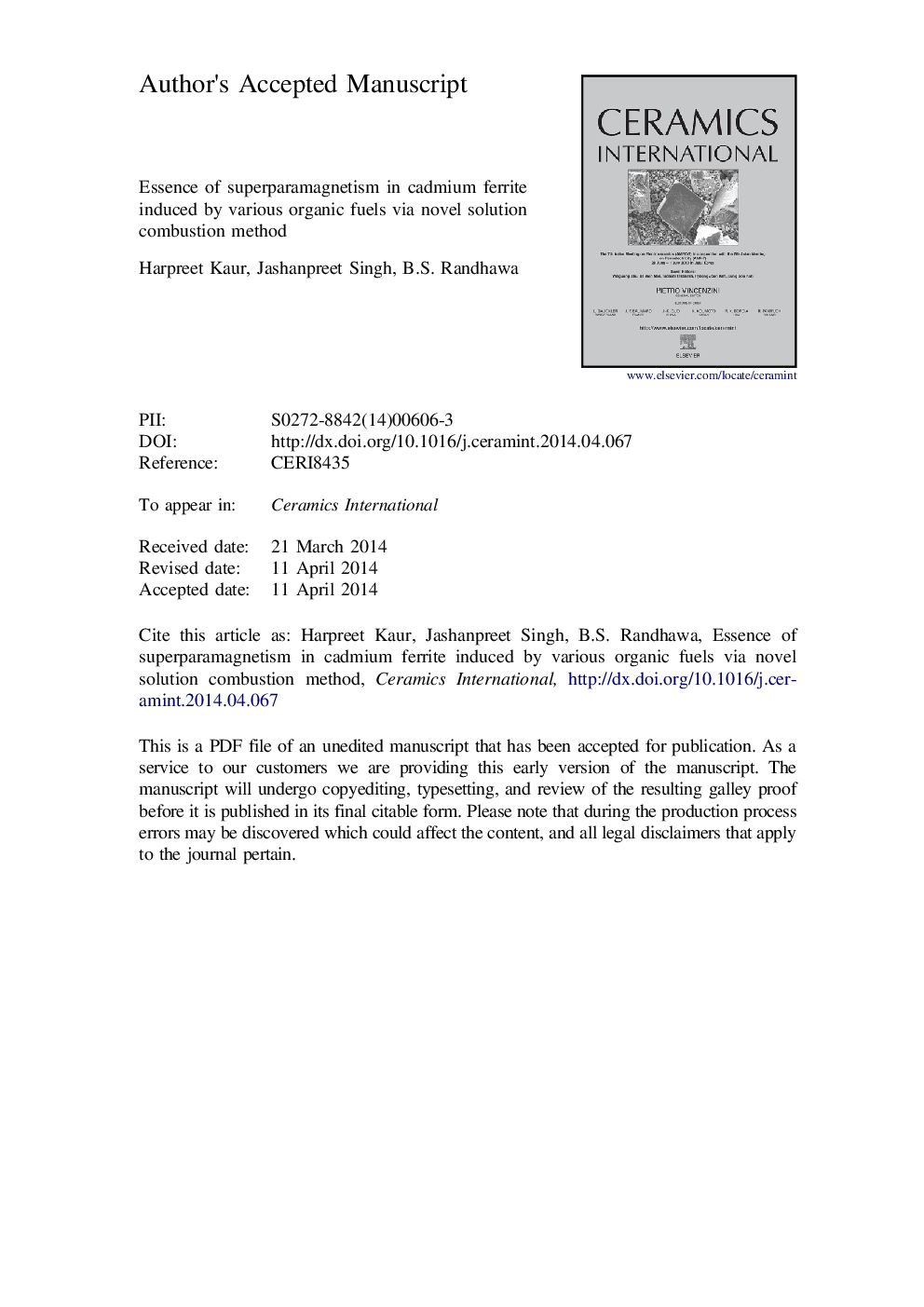| Article ID | Journal | Published Year | Pages | File Type |
|---|---|---|---|---|
| 10625533 | Ceramics International | 2014 | 22 Pages |
Abstract
An attempt has been made to enumerate the myriads of successful applications of magnetic materials in nano-regime via low-temperature solution combustion synthesis of cadmium ferrite using different organic fuels such as urea, oxalyl dihydrazide (ODH), glycine and ethylene glycol giving rise to 1D nanorods and monodispersed spherical nanoparticles, thereby exploring their applicability in nanoelectronic devices such as high speed integrated circuits as well as in biomedical field as contrasting agents used in magnetic resonance imaging (MRI) with enhanced magnetization. Thus, with appropriate selection of organic fuel and precursors (metal nitrates), single phase, cubic structured cadmium ferrites have been synthesized as depicted from FTIR spectroscopy and XRD patterns with particle size lying in 12-27Â nm regime as rendered from TEM micrographs. Magnetic studies in the shadow of Mössbauer studies prelude to the emergence of superparamagnetism with non-saturation of M-H loop and negligibly small values of remanence as well as coercivity at room temperature, hence attributing to its single domain as well as soft magnetic character. Moreover, the room temperature dielectric measurements show dispersion behavior with increasing frequency corresponding to low dielectric losses, hence making them suitable for applications in high-frequency devices. Thus, solution combustion methodology was successfully used as a key step in the synthesis of CdFe2O4 with highly superparamagnetic and soft character, thereby leading to products with different morphologies in nano-regime.
Keywords
Related Topics
Physical Sciences and Engineering
Materials Science
Ceramics and Composites
Authors
Harpreet Kaur, Jashanpreet Singh, B.S. Randhawa,
